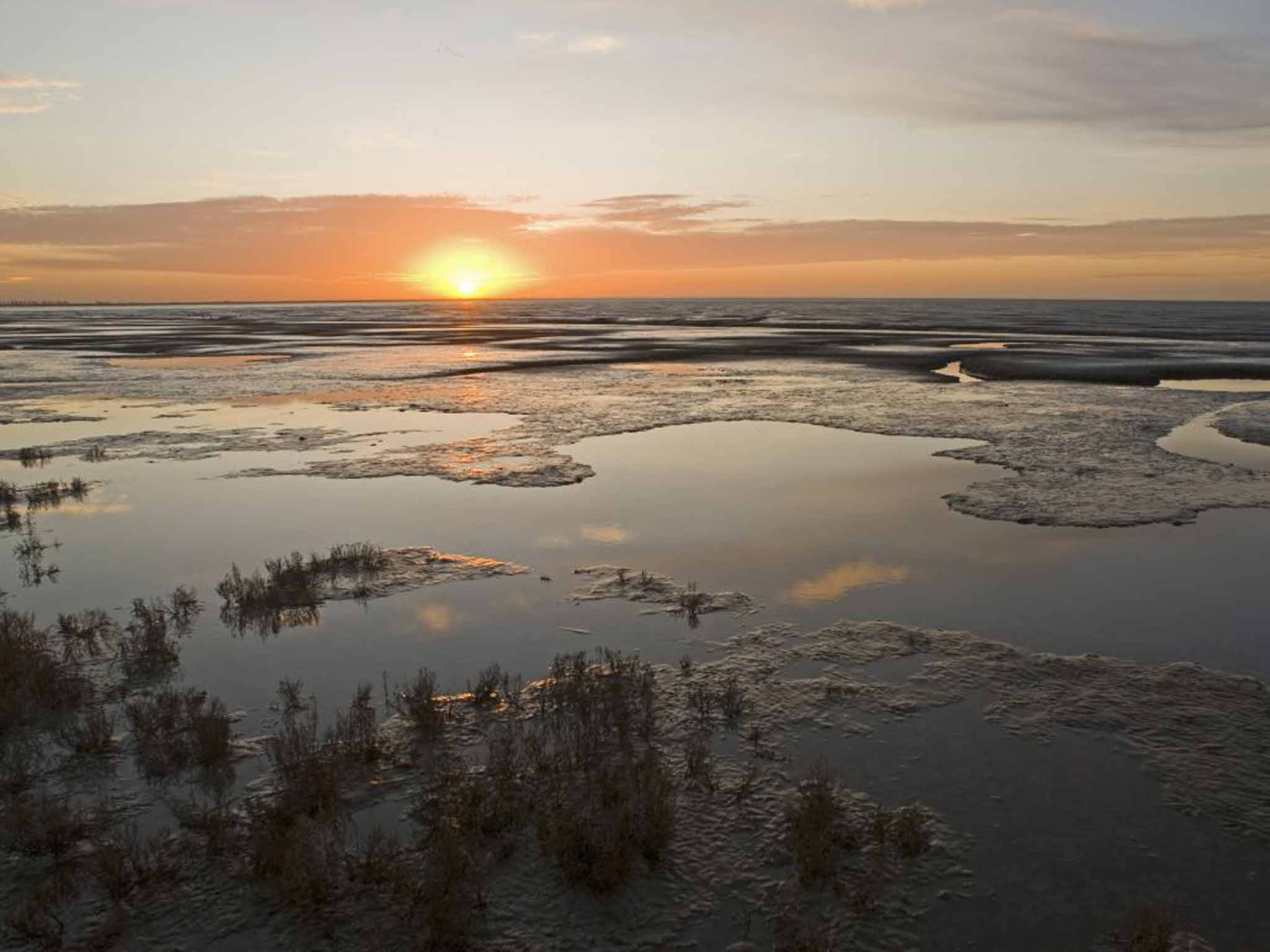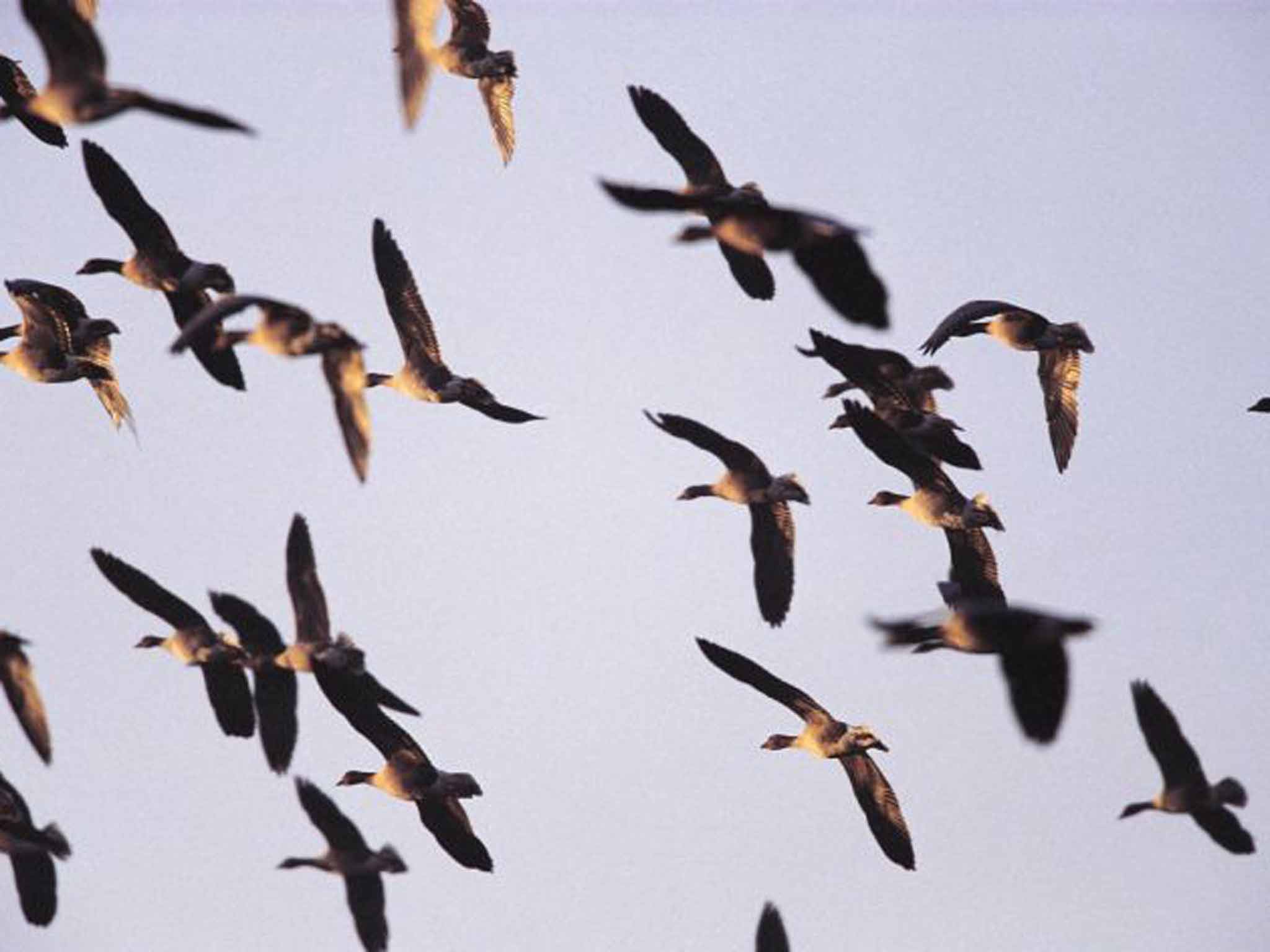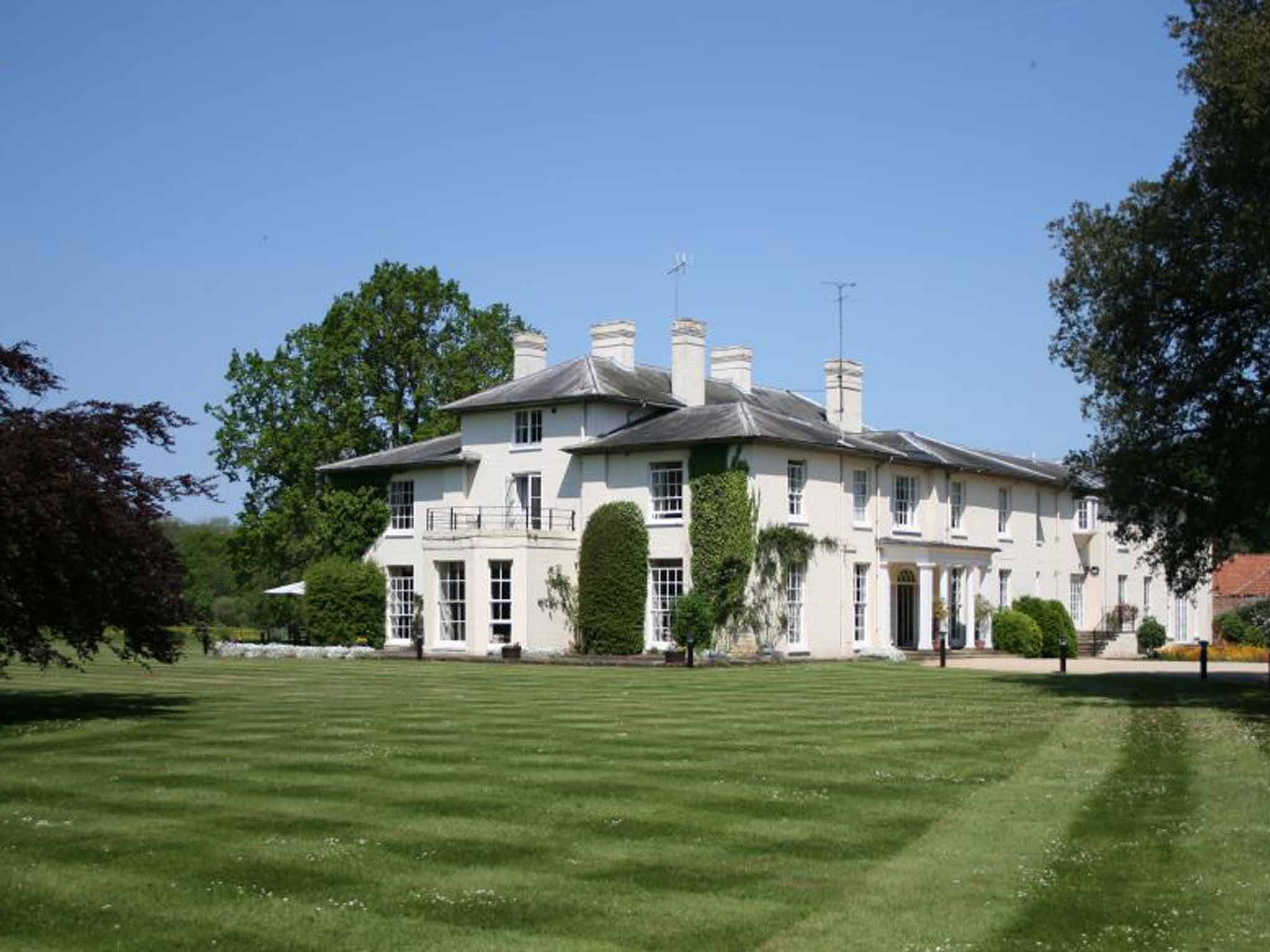The Independent's journalism is supported by our readers. When you purchase through links on our site, we may earn commission.
10 best wildlife-watching experiences: From hen harriers to porpoises
While many of Britain's birds have flown south for the winter, it's still a great time to get outside for a spot of wildlife-watching. Mark Rowe wraps up warm for his ten favourite experiences

Pink-footed geese, Norfolk
The alarm clock rang at 5.30am. By 6am I was shivering in a car, grateful the ignition had worked in sub-zero January temperatures. I drove down a lonely country lane that became a track that collapsed into a rutted sheet of ice as I reached my destination; Snettisham RSPB nature reserve in north Norfolk.
At this point I realised I hadn’t even reached journey’s end. There was still the matter of a mile’s walk along sunken paths, brushing brambles and squelching puddles. The moon illuminated still ponds that I would otherwise never have suspected of being close by.
Then, a short climb up a handful of steps and I stepped on to an embankment that looked out on The Wash, the extraordinary expanse of water that surges and recedes along the coast where Norfolk and Lincolnshire collide. The faintest dab of colour lit the sky, and though it was too dark to see anything other than silhouettes, the show began.
Just four of them to start with. Then a dozen. Then – quick estimates – 20, 50, 100. Soon the sky was filled with pink-footed geese. They flew perhaps just 50ft above me, their wings making the most enchanting whisper. At one point I counted a column 80 birds wide and four high, flying in a cloud of honking and feathers for four minutes. I’d been advised by the RSPB ranger to count 50 birds and scale up from there; I quickly got to 4,000. As night fell away, huge skeins of geese cut through the orange sunrise.
The flyover of pink-footed geese is one of the great wildlife spectacles of the world, let alone the UK. In winter, they take off from the mudflats and salt marshes of The Wash at dawn and head inland to devour the energy-rich roots of the county’s leftover sugar beet crop. They roost out on The Wash to keep clear of predators such as foxes.
Later that day, I returned to the same spot. The sky was still cloudless but I had that disorienting sensation you get when the sun is somewhere you think it shouldn’t be. I imagined I was facing north, but instead the beach orients itself more to the west. The sun dropped with a speed and steepness of angle I usually associate with equatorial countries, a quirk explained away by the severe, flat landscape of The Wash. The honking resumed and the birds began to return to their roost.

Red deer, Peak District
Seeing a large wild mammal in the countryside is a rare thing in England, but the Eastern Moors of the Peak District outside Sheffield offer an excellent chance to spot red deer, particularly the charismatic stags. The moors are home to a herd of around 130 deer and they are now so common that there have been reports of them leaping fences in back gardens.
Hen harriers, Wicken Fen, Cambridgeshire
One of Britain’s rarest birds, the hen harrier returns from the northern uplands and Scotland to spend winter swooping over the vast open landscapes of Wicken Fen. The harrier is a magical bird, ghostly grey, its wings seemingly dipped in ink. The best time to catch them is around dusk as they fly up and down Wicken’s russet-coloured sedge, where the reed beds waft skywards against a landscape of spirit-level flatness.
nationaltrust.org.uk/wicken-fen
Seals, Blakeney Point, Norfolk
This winter looks set to be a record-breaking year for grey seal pups in the UK. More than 1,500 have already been born at Blakeney Point in Norfolk, sporting their distinctive white “puppy” fur that has the cuteness factor. The best way to visit them is on a boat cruise from Blakeney’s Morston Quay. Several companies offer trips for around £10 per person, including Beans Boat Trips (beansboattrips.co.uk).
Ptarmigan, Cairngorms
Spotting a ptarmigan against the winter background of the highest mountains of the Scottish Highlands is as close to an Arctic spectacle as you can get in the UK. This bird is notoriously hard to pick out in winter, thanks to a superb spot of camouflaging: its white plumage blends in with the snow of the Cairngorms, a black eye-patch the only giveaway. Even so, they can often be spotted within walking distance of the Cairngorm ski centre.
Red squirrels, Brownsea Island, Dorset
Brownsea Island has a strong population of red squirrels, safely separated from their grey rivals by the depths of Poole Harbour. Winter is a good time to spot them – they don’t hibernate and while they are associated with conifer trees, they can often be spotted among the leafless sweet chestnuts and hazel.
nationaltrust.org.uk/brownsea-island
Starling roost, Somerset
Where starlings are concerned, size does matter. Around a million or more birds converge on the watery Somerset Levels as dusk approaches, swooping, swarming and swaying in a twilight aeronautical display. If you have the energy, it’s worth seeing the same display at dawn, when the drama is arguably even more sensational. The best displays take place on clear, cold days.
Bewick’s Swans, Slimbridge, Gloucestershire
Resembling Harrier jets landing on an aircraft carrier as they skim the water’s surface, more than 100 Bewick’s swans spend winter at the Slimbridge reserve in Gloucestershire, away from their summer breeding grounds in the Russian Arctic. Remarkably, staff at Slimbridge are able to identify each returning swan by its unique black and yellow bill.
Porpoises, Pembrokeshire
Large numbers of harbour porpoises, including mothers with calves, can be seen in winter moving up and down the waters between Strumble Head and St David’s in Pembrokeshire, one of the animal’s strongholds in the UK. Risso’s dolphins, with their blunt, bulbous foreheads are also a frequent sight in winter.

Black redstarts, east London
A small bird, no bigger than a robin, the black redstart spends winter in the UK in small numbers, and in one or two unexpected places. The River Lee in east London is one of its favoured spots, including derelict buildings and eaves where the Lee meets the Thames at East India dock basin. It has also been spotted in the Olympic Park since the Games.
Travel essentials
A three-night winter wildlife-watching package at Congham Hall near Snettisham in Norfolk (01485 600250; conghamhallhotel.co.uk) costs £300 per person, half board, based on two sharing. Binoculars and boots are available for guests to borrow. visitnorfolk.co.uk
Join our commenting forum
Join thought-provoking conversations, follow other Independent readers and see their replies
Comments